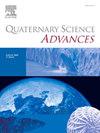Landslide susceptibility mapping using frequency ratio and analytical hierarchy process method in Awabel Woreda, Ethiopia
IF 2.2
Q2 GEOGRAPHY, PHYSICAL
引用次数: 0
Abstract
A landslide is a serious geo-environmental problem that results in the death of life and the devastation of infrastructure, properties, and agricultural lands. This research aimed to identify landslide susceptibility zones in selected Kebels of Awabel Woreda, central Ethiopia. Frequency ratio (FR) and analytical hierarchy process (AHP) methods were used. 175 landslide inventory data collected from Google Earth and field data were collected for testing and training data sets. Using the analytical hierarchy process, all the thematic layers (stream distance, slope, aspect, rainfall, lineament density, elevation, lithology, soil, land use/land cover, and curvature) were reclassified and weighted based on their relative contribution to landslide occurrence with the help of experts’ knowledge. The results show that 11.85% and 20.52 % of the study fall under the very high and high susceptible zones, respectively, while the low susceptible zones cover 26.3% and 14.74% of the area. The landslide susceptibility zone identified by the frequency ratio model shows that (6.09%) and (16.9%) of the area covered very high and high susceptible zones, respectively, while 30.4% and 23.4% of the area covered low and very susceptible zones, respectively. The predicted landslide-susceptible areas were validated using existing landslide points with the help of the ROC tool in ArcGIS. Area under the curve (AUC) results were 84.5% for the AHP model and 73% for the frequency ratio model. The find of this study will provide an input for decision makers and land use planners in the future.
在埃塞俄比亚阿瓦贝尔县使用频率比和层次分析法绘制滑坡易发性地图
山体滑坡是一个严重的地质环境问题,会导致人员死亡,基础设施、财产和农田遭到破坏。本研究旨在确定埃塞俄比亚中部阿瓦贝尔省选定的 Kebels 地区的滑坡易发区。研究采用了频率比(FR)和层次分析法(AHP)。从谷歌地球和实地数据中收集了 175 个滑坡清单数据,作为测试和训练数据集。利用分析层次过程,在专家知识的帮助下,对所有主题层(流距、坡度、坡向、降雨量、线状密度、海拔高度、岩性、土壤、土地利用/土地覆盖和曲率)进行了重新分类,并根据其对滑坡发生的相对贡献进行了加权。结果表明,研究范围内分别有 11.85% 和 20.52% 的区域属于极易滑坡区和易滑坡区,而低易滑坡区分别占 26.3% 和 14.74% 的区域。频率比模型确定的滑坡易发区显示,极高易发区和高易发区分别占(6.09%)和(16.9%),低易发区和极易发区分别占(30.4%)和(23.4%)。借助 ArcGIS 中的 ROC 工具,利用现有滑坡点对预测的滑坡易发区进行了验证。AHP 模型的曲线下面积(AUC)结果为 84.5%,频率比模型为 73%。这项研究的结果将为决策者和土地利用规划者提供参考。
本文章由计算机程序翻译,如有差异,请以英文原文为准。
求助全文
约1分钟内获得全文
求助全文
来源期刊

Quaternary Science Advances
Earth and Planetary Sciences-Earth-Surface Processes
CiteScore
4.00
自引率
13.30%
发文量
16
审稿时长
61 days
 求助内容:
求助内容: 应助结果提醒方式:
应助结果提醒方式:


